If you want to prepare for a tornado, you should create an emergency plan, identify a safe shelter space, gather essential supplies, stay alert to weather warnings, and secure a dependable power backup.
Disaster management should be applied to every household. Children and adults must know the basics of tornado preparation to save themselves in critical situations. It is essential to understand how to prepare for a tornado, and there are some basic steps such as making an emergency plan, storing important documents, preparing an emergency kit, preparing property hazards, having a checklist, and creating a communication plan you can take.
Understanding the warning systems, having an emergency plan, and accessing reliable power solutions are other necessary for tornado preparedness. For the same, Jackery Solar Generators emerge as a vital and reliable solution to provide backup power for running essential appliances if a tornado hits and there is a power cut. While keeping the devices operational, these solar generators offer peace of mind and safety during such situations.
AI Takeaways
- You must have access to the NOAA weather radio to ensure you receive important updates from the weather service about tornado watches and warnings.
- You must understand how to prepare for tornadoes by creating an emergency list, writing down important information, storing essential documents, and preparing the emergency kit.
- How Jackery Solar Generators can keep essential appliances powered during the outages caused by tornadoes.
- What to do during and after tornadoes hit your area to keep yourself and your loved ones safe and protected.
Understanding Tornado Basics
According to the National Oceanic and Atmospheric Administration, a tornado is a violently rotating column of air that touches the ground and is usually attached to the base of a thunderstorm. It is one of the most violent storms of nature. It takes seconds for a tornado to cause destruction and destroy a neighborhood. Tornado winds are so strong that they may reach 300 miles an hour. Tornadoes are highly likely to cause hailstorms as well. Mostly, tornadoes are unpredictable as you may see clear and sunlit skies before them.
The collision of warm, moist, and cold, dry air causes a tornado. These two airs create pressure when they meet. As the warm air rises through, it can cause cold air to start spinning. But once the updraft draws in more air, its rotation speed increases, and it turns into a tornado once it touches the ground. Here are some common causes of a tornado:
Moist and Warm Air: To feed, tornadoes often need a source of warm and moist air. This air comes from the Gulf of Mexico or the Pacific Ocean.
Cold and Dry Air: Tornadoes need cold and dry air to fuel the storm. This air comes from tornadoes occurring in the US.
Jet Stream: It is a fast-moving current that flows high in the atmosphere. When a jet stream moves in the right direction, it can push warm and cold air together, creating a tornado.
Front: A boundary between two masses is known as a front. When a cold front and warm, moist air move into an area, it can create tornado-forming conditions.
Wind Shear: It is the change in wind direction or speed over a short distance. It can cause the air to spin and turn into a tornado.
What is a Tornado Warning System?
Every year, tornadoes can impact locations across the country and cause massive destruction. Tornadoes have been reported in all 50 states, including the central plains, Midwest, and Southeast. You should prepare in advance to keep yourself safe.
One should always access the NOAA weather radio to receive updates from the weather service about watches and warnings. A tornado watch simply means that a tornado is possible and is issued when weather conditions favor the formation of tornadoes. A tornado warning means that a tornado has either been sighted by the spotters or has been indicated by weather radar.
A tornado watch also means that tornadoes are possible in and near your areas, and you should be prepared with your emergency plans and check supplies. If a warning is issued, be ready to act quickly, as it also helps to save lives. Storm prediction centers for countries issue tornado watches, and the watch area covers numerous states and countries. The general tornado warnings include:
A funnel-shaped cloud from a thunderstorm extends toward the ground and may be visible.
Swirling Debris: Sometimes rain, clouds, and trees might block your view of the funnel as these obscure tornadoes. Even if a visible funnel is not seen touching the ground, swirling debris can rise up in the air with weak tornadoes. This is a sign of fast and damaging winds.
Sound: A train moving through trees may indicate an approaching tornado. Sometimes, the rotating winds in a tornado make a high-pitched whistling noise. Take immediate action if that happens.
Color: A dark-colored thunderstorm or one with brown or green color may indicate a thunderstorm. The darkness of the cloud happens because of the huge size of the storm and when it blocks sunlight.
Some specific local tornado warning systems are disseminated through sirens, local television, radio, cable television systems, phone applications, and NOAA weather radio.
Warning sirens: They are used in towns to warn people of storms. If you have a siren in your community, you should know how it is used. If you hear a siren, instead of calling 911, you should first listen to NOAA weather radio or TV for information.
Radio and Television Stations broadcast storm warnings: Cable television systems may also have warning information on a designated channel. Local warnings can be found in a local station, not satellite television stations.
Smartphone Applications: The federal emergency management agency provides many smartphone applications and free wireless emergency alert services. In the vicinity of tornadoes, these warnings are broadcast from towers; if you are near the hazard, you will receive them.
NOAA Weather Radio: Once you tune in to the NOAA weather station, you will hear an alarm alerting you if a storm warning is issued. This way will help you learn about an impending storm when you are asleep, outdoors, or without electricity.
How to Prepare for a Tornado?
Tornadoes are potent columns of spinning air that move across the land. In case of a tornado watch, you should be prepared to take shelter in your area. If there is a tornado warning, it indicates the tornado has been spotted, and you are required to take shelter immediately. Here are the six tips for preparing for a tornado:
Make an Emergency Plan
Your emergency plan must include four critical elements: shelter, supplies, separation, and safety. A plan is essential because complex instructions may be difficult for anyone to remember, especially during a warning. After creating an emergency plan, you should discuss it with friends, neighbors, and family to feel more comfortable.
Write Down Some Important Information
Critical information may include emergency phone numbers such as police, fire, and medical centers. You should also have the name and address of your insurance agents, including policy numbers. Other important information includes phone numbers of electric, gas, and water companies, property managers, neighbors, vehicle identification numbers, bank account numbers, etc.
Store Important Documents
Vital documents must be stored in a fireproof and waterproof case. These may include birth certificates, ownership certificates, pet registrations, passports, medical records, security cards, insurance policies, and household inventory.
Prepare an Emergency Supply Kit
Always stock up on emergency supplies beforehand to use after a tornado. These supplies should include a first aid kit, automobile supply kits, food, water, and reliable power solutions, such as the Jackery Solar Generators, to use during power cuts.
For Scott Simpson, who lives deep in rural northeast Wisconsin, power outages are a part of the landscape. Winter storms roll across the Great Lakes, ice clings to power lines miles from the nearest substation, and the silence that follows a shut-off furnace is enough to unsettle anyone. That’s why Scott built his own layered backup system, eventually turning to Jackery products when he realized he needed something quieter and easier to manage than gasoline alone. Now, when a storm hits, he simply wheels the Jackery product to his covered patio, plugs it into his existing setup, and runs lights, well pump, WiFi, water heater, or anything his family depends on. Read the full Jackery Story to learn more.
Reduce Property Hazards
Inspect your home for possible hazards and ask relevant questions. Attention to construction details can reduce damage and provide better protection to your home. Arrange furniture in a way that it is away from windows and picture frames—secure top-heavy furniture with aluminum molding or corner brackets.
Make a Communication Plan
An emergency communication plan is essential if a family member is separated when a tornado hits. Local phone networks can be overwhelmed by simultaneous calls, so calling a long-distance friend or relative from another state could be more accessible.

Jackery Solar Generators for Emergencies
Jackery is a global leader in manufacturing portable power stations, solar generators, and solar panels. These are designed for both indoor and outdoor use, offering a sustainable and environmentally friendly solution for powering devices and serving as an emergency backup.
The Jackery Solar Generator combines the Jackery Portable Power Station and the Jackery SolarSaga Solar Panel. It produces no toxic gases and operates cleanly, causing no environmental damage. The Jackery Solar Generator can power appliances like phones, refrigerators, TVs, lights, laptops, etc., when there is a long-term power outage caused by a tornado or any other natural disaster.
Jackery Solar Generator 2000 Plus
The Jackery Solar Generator 2000 Plus has an expandable capacity that is ideal for off-grid living when there is a power outage during unforeseen weather conditions like tornadoes. If you are a working professional and have to attend an important meeting, the solar generator can power hours of your professional work.
With the capability to power most household appliances, the Jackery Solar Generator 2000 Plus can power essential devices like lights, medical equipment, laptops, refrigerators, and more. A 60W laptop using the Jackery Solar Generator 2000 Plus for charging would work for 28.9 hours. A 520W refrigerator would work for 3.33 hours, and a 29W phone would work for 59.87 hours.
Appliances Running Time
- Refrigerator (300W) = 5.3H
- Heater (1500W) = 1.1H
- Microwave Oven (1100W) = 1.5H
- Cooktop (1500W) = 1.1H
- TV (150W) = 10.0H

Who Should Buy This
If you want an expandable solar generator that can be expanded based on your power needs, the Jackery Solar Generator 2000 Plus would be an ideal choice.
Customer Review
“I went off the grid with it, and we love it; we live in a camper and power up everything at least two days without charging but using everything, so I'm thrilled that we got it. We have a small Jackery that we relied on, but now we have no problem with power.” -- Marcin Powichrowski
Jackery Solar Generator HomePower 3000
The Jackery Solar Generator HomePower 3000 is an essential home backup solution that can offer up to 2 days of kitchen backup during outages caused by tornadoes. For example, you can power a fridge for up to 2 days (or more by connecting with solar panels). It is the lightest and smallest 3kWh LFP portable power station, so you can always enjoy reliable power when the grid goes down. It features dual-sided handles to ensure easy transportation and storage.
Appliances Running Time
- Fridge (150W) = 15.2H
- Light (10W) = 81.6H
- TV (150W) = 15.2H
- Cooking Stove (1000W) = 2.6H
- Heater (1500W) = 1.7H

Who Should Buy This
If you want a lightweight but powerful home backup solution to power appliances during power outages caused by tornadoes or other natural disasters, you can consider the Jackery Solar Generator HomePower 3000.
Customer Review
“I finally feel secure knowing that when the blackouts occur, I can simply push a button and keep my fridge and freezer running. Blackouts are occurring more frequently, and I am prepared. Thank you.” — Victoria Woodward.
Jackery Solar Generator HomePower 3600 Plus
The Jackery Solar Generator HomePower 3600 Plus is a dependable backup option when tornadoes cause sudden and extended power outages. It keeps essential appliances running, like your fridge, lights, phones, medical devices, and even small heating or cooling appliances, so your home stays functional while the grid is down. It offers reliable power that helps you stay connected and comfortable while recovering from severe weather. It also features double wheels and a pull rod, so you can easily roll the solar generator from one place to another.
Appliances Running Time
- Fridge (150W) = 17.7H
- Light (10W) = 95.2H
- TV (150W) = 17.7H
- Cooking Stove (1000W) = 3.0H
- Heater (1500W) = 2.0H

Who Should Buy This
If you live in a tornado-prone area and want an essential home backup power to keep critical appliances running safely during and after tornado-related outages, you can consider the Jackery Solar Generator HomePower 3600 Plus.
Customer Review
“Excellent storage solution! Well manufactured and easy to use. I live in SW Florida. This is for the Hurricane that I hope never happens! I am completely satisfied with my purchases.” — Ronald Cenno.
Jackery Solar Generator 2000 Plus Kit (4kWh)
The Jackery Solar Generator 2000 Plus Kit (4kWh) comes with a battery pack and Jackery SolarSaga Solar Panels. It powers your appliances during extended blackouts, can be a lifeline in emergencies, and helps with tornado preparedness. With the Jackery Solar Generator 2000 Plus Kit (4kWh), you can keep yourself safe and connected in the aftermath of a disaster.
The solar generator can power source essential devices such as medical equipment, communication devices such as phones, lightning, cooking devices such as microwaves and coffee makers, TVs, refrigerators, radios, and many more.
Appliances Running Time
- Refrigerator (300W) = 10.8H
- Heater (1500W) = 2.3H
- Microwave Oven (1100W) = 3.1H
- Electric Stove (2000W) = 1.7H
- TV (150W) = 20.2H

Who Should Buy This
If you prefer a home battery backup with an add-on battery pack where you power appliances with the main unit and store the battery pack for later use, you can consider the Jackery Solar Generator 2000 Plus Kit (4kWh).
Customer Review
“This is absolutely a great addition to the 2000 Plus. I mainly have it for power outages, but I will also use it on occasional camping trips. I will probably buy an additional pack to make my supply 6k.” -- Mark Watkins
Jackery Solar Generator 5000 Plus
The Jackery Solar Generator 5000 Plus is the most powerful essential home backup for emergency household appliances. It features dual voltage compatibility, ensuring that appliances requiring 120V or 240V can be easily powered. With the help of battery packs and an extra power station, you can expand the capacity up to 60kWh and ensure two weeks of backup power. Even if the tornadoes cause long-term outages, the essential home backup solution ensures uninterrupted power to emergency household appliances.
Appliances Running Time
- Refrigerator (300W) = 12.2H
- Heater (1500W) = 2.8H
- Microwave Oven (1100W) = 3.7H
- Electric Stove (2000W) = 2.1H
- TV (150W) = 21.4H

Who Should Buy This
If natural disasters often knock out power in your area, the large-capacity Jackery Solar Generator 5000 Plus would be an ideal solution.
Customer Review
“This is my second unit from Jackery. Love them. I bought the 5000 plus for backup for the coming storm season here in Houston. Mainly to run the refrigerator. The great sale and stackable coupon sealed the deal.” — David Tanaka.
What Should You Do During A Tornado?
For many states, tornadoes can be year-round. There is a list of what is most important to remember when you feel threatened by a tornado. You can find yourself in any situation when a tornado occurs, such as driving a car, walking on the road, or at home. Here are five tips that can help you get prepared during a tornado:
1. Be Prepared & Plan Ahead
Sometimes, when there isn’t a cloud in the sky, it might be time to prepare for severe weather. In that case, you can spare some time with your family, planning how to address the types of severe conditions that might occur.
2. Stay in Touch With Weather Reports and Local Warnings
Always stay in touch with weather reports and warnings, such as severe thunderstorm warnings, tornado warnings, or tornado emergencies. Some warnings can last 30-60 minutes. Once spotters or radar indicate a warning, people in the affected area should be ready to take immediate cover.
3. Know Where to Shelter and Practice Your Plan
During a warning, shelter should be taken immediately, whether you are at home or on the road. At home, the safest place to shelter is the basement or an inside room without windows. Always practice your plan with your family members and include pets as well. It's recommended not to stay in a mobile home during a tornado. You can lie in a ditch and shield your head if no shelter is nearby.
4. Stay Away From Windows, From Power Lines, From Damaged Buildings
Windows can be the first thing to break due to the strong winds of a tornado. As mentioned earlier, if you are inside a room, always find shelter in a room without windows. Also, avoid going to large open rooms such as gyms, cafes, or libraries. If you or someone in your family is in a wheelchair, seek shelter under a table or sturdy desk.
5. Safety Tips While Driving
Strong winds can turn it over if you live in a mobile house and often drive. Even a mobile home's tie-down system cannot withstand a tornado. The first thing to do in such a scenario is to go to a nearby building with a basement.
What Should You Do After A Tornado?
To stay updated about watches and warnings, listening to NOAA weather radio is highly recommended. After a tornado, always inform your family about your well-being and check if your property has been damaged. Be prepared and train yourself, as you may come across injured people who may need your help until the emergency team arrives. Here are some crucial tips one should follow to stay safe after a tornado:
Check injuries: If you are around an injured person, do not try to move them; instead, get medical assistance. Always learn how to give CPR to help someone who has stopped breathing. Carry soap and clean water in your bag to clean an injured person's wounds. If the wound doesn’t stop bleeding, apply direct pressure to stop it.
Be careful near damaged buildings: Do not enter a damaged building until the local authorities announce that it is safe. Once you enter a building, always be aware of hazards from broken window panes, glass, or nails. If you hear unusual noises from the building, it could mean the building is about to fall, so leave it immediately.
Be aware of potential hazards: Check your home walls, floors, and doors for cracks or other damage. If you see any structural damage, you may need to relocate to a shelter. Also, check the gas valve, water, and electrical lines for damage. Shut off the main valve if you smell gas. Do not use matches or lighters unless you are sure there is no gas leak.
Stay away from power lines: While walking on the road, watch out for power lines that may be hanging. Immediately call the electric power authority to fix the issue.
Prevent Carbon monoxide poisoning: Fuel-burning equipment such as generators, grills, stoves, etc., creates carbon monoxide. This equipment should be avoided inside the house or garage, as the gas cannot be seen or smelled. However, if it gathers inside your room or home, it can cause sudden death. For extra safety, keep a battery-operated CO detector, and if it starts beeping, call 911.
Common Questions About How to Prepare for a Tornado
What size of solar generator do I need for a tornado?
The "size" of a solar generator for a tornado depends on the power needs of your essential appliances and the desired backup duration. To determine the right size, first, list your critical items, then add up their wattage to estimate the system's total capacity. Next, choose a battery capacity (in kWh) that can run those items for the desired time.
If you want to calculate how long the Jackery Solar Generator can power your appliances, all you need to do is visit the product page and scroll to find the running time calculator. You can then add the total wattage consumption of the appliances you would like to power with the solar generator and hit Enter to get the estimated runtime. For example, a fridge consuming 150W can be powered for over 15 hours with the Jackery Solar Generator HomePower 3000.
What are five ways to prepare for a tornado?
Staying updated for watches and warnings, knowing the difference between a watch and warning, knowing about the tornado warning system, identifying places to take shelter in different situations, and creating an emergency plan are the five ways to prepare for a tornado.
What are the ten things you need to survive a tornado?
Ten things you need to survive a tornado include water, food, a weather radio by the National Oceanic and Atmospheric Administration (NOAA), a first-aid kit, an emergency kit, a flashlight with extra batteries, a stove and fuel kit, medication, plasticware, waterproof gear, etc.
What are three things you should do during a tornado drill?
During a tornado drill, you must move to your shelter location quickly, stay away from windows, buildings, and power lines, and avoid large open rooms.
What to put in a tornado bag?
A tornado bag must contain water, clothes, a flashlight, extra batteries, a first-aid kit, a whistle, food, etc.
Final Thoughts
To prepare for a tornado, one must ensure safety and minimize damage during unpredictable and extreme weather conditions. Understanding how to prepare for a tornado is crucial to prepare for a tornado physically and mentally. It is not enough to gather materials for an emergency kit; before that, having a basic understanding of tornadoes, such as the difference between watches and warnings, is equally important.
A solid emergency plan, such as a Jackery Solar Generator, which provides eco-friendly and reliable backup power, can significantly reduce risks. Solar generators can help in many ways during a tornado, e.g., by maintaining communication and powering essential appliances. Jackery commits to sustainable and reliable portable power solutions and is a valuable asset in disaster preparedness.

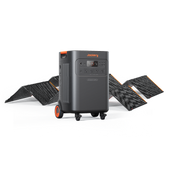











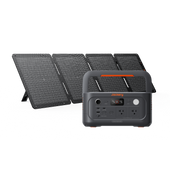



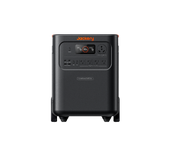
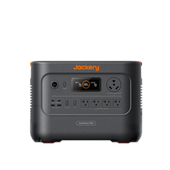





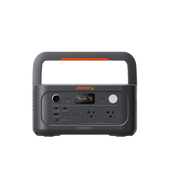





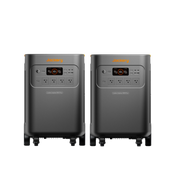
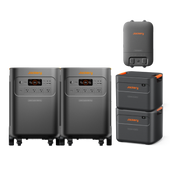





![[Add - on] Jackery Manual Transfer Switch for Explorer 5000 Plus - Jackery](http://www.jackery.com/cdn/shop/files/add-on-jackery-manual-transfer-switch-for-explorer-5000-plus-9017324.png?v=1754016782&width=170)
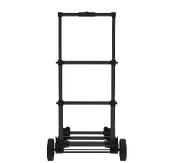
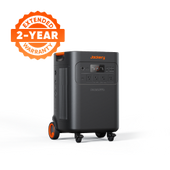
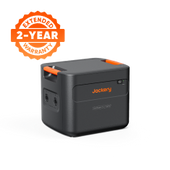
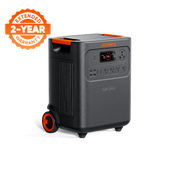
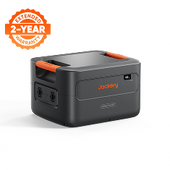
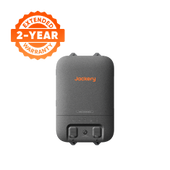



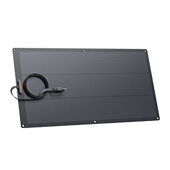
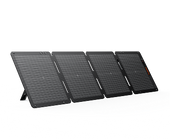




















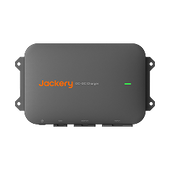




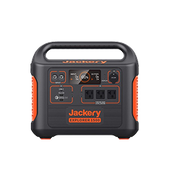






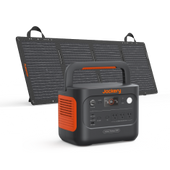
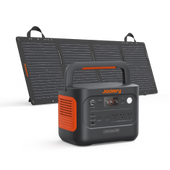






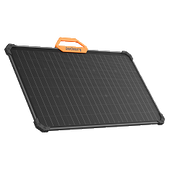


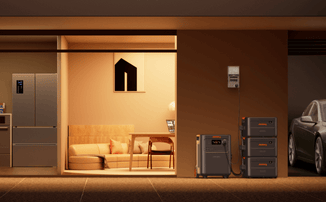














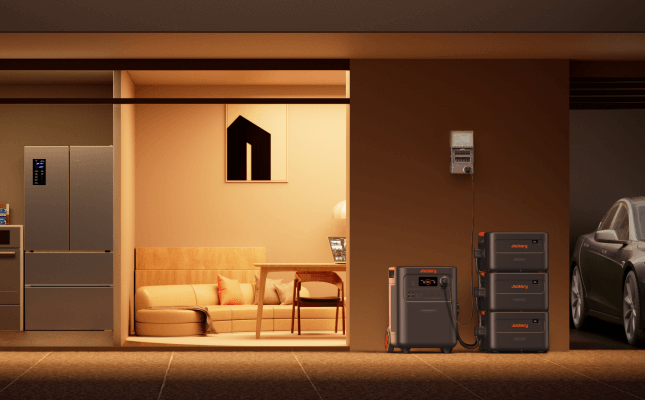


















![How to Prepare for a Tornado [Complete Guide]](http://www.jackery.com/cdn/shop/articles/how-to-prepare-for-a-tornado-complete-guide-6074951.jpg?v=1763155177)







Leave a comment